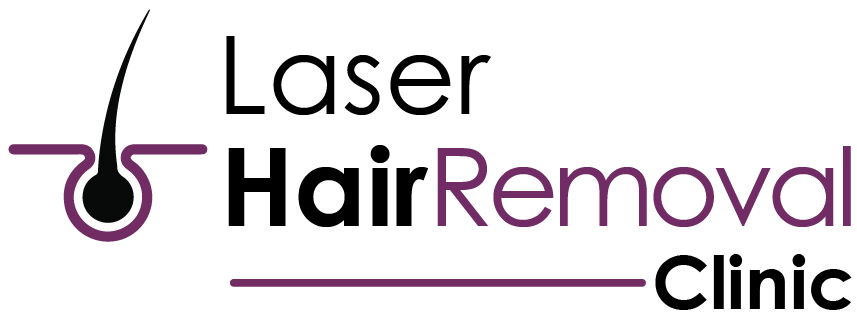Laser hair removal is a cosmetic procedure that uses a concentrated beam of light (laser) to remove unwanted hair. The laser targets the melanin (pigment) in the hair, destroying the hair follicle while leaving the surrounding skin undamaged. It is a non-invasive procedure using different lasers to target hair colours, thicknesses and skin types.
The procedure is typically performed by a licensed healthcare professional such as a dermatologist, aesthetician, or laser technician.
The laser hair removal procedure is most effective for people with dark, coarse hair but with the new technologies. It is possible to treat a wide range of hair and skin types. It removes hair on the face, legs, underarms, bikini area, back and other body parts.
It’s a safe and effective way to remove hair, but it’s important to be realistic about the results. It may not completely remove all the hair. But it can significantly reduce hair growth. making it a great way to reduce the need for frequent shaving, waxing or threading.
It’s also important to note that laser hair removal can vary depending on the type of laser used. Some laser hair removal devices are more effective than others, and the practitioner may suggest a certain number of sessions based on their experience with the laser they use.
What can I expect from the laser hair removal procedure at the clinic?
The laser hair removal procedure typically involves the following steps:
Consultation:
Your practitioner will conduct a consultation to assess your skin and hair type and to determine if you are a good candidate for laser hair removal. They will also answer any questions you may have about the procedure.
Shaving the area:
It’s recommended to shave the area to be treated before the procedure. It is also possible that your practitioner will shave the area before the treatment.
Cleaning the area:
The area to be treated will be cleaned, and a cooling gel or cream may be applied to help protect the skin.
Laser treatment:
The laser device will be applied to the skin, emitting a beam of light absorbed by the hair follicles, destroying them. The treatment is usually not painful, but some people may feel a mild snapping sensation. The laser will be adjusted to the appropriate settings based on your skin and hair type.
Cooling the area:
After the treatment, a cooling gel or cream will be applied to help soothe the skin.
Post-treatment instructions:
Your practitioner will provide post-treatment instructions, such as avoiding sun exposure, not shaving or waxing the area for a certain period, and using sunscreen.
The length of the procedure will depend on the size of the area being treated and can take anywhere from a few minutes to an hour. Some people may experience mild side effects, such as redness, itching or minor swelling, but these should disappear within a few hours to a few days.
It’s important to note that multiple sessions are usually required for optimal results, and the number of sessions will depend on the individual’s hair colour and thickness, the area being treated, and the type of laser used.
Is there any downtime from laser hair removal treatment?
Laser hair removal is considered a non-invasive procedure, and there is usually little to no downtime required after the treatment. Most people can return to their normal activities immediately after the treatment.
You may experience some mild side effects after the treatment, such as redness, itching, or minor swelling in the treated area. These symptoms usually disappear within a few hours to a few days.
It’s important to avoid sun exposure, hot showers, saunas, and strenuous exercise for the first 24-48 hours after the treatment, as these can aggravate any skin irritation. Additionally, avoiding using any exfoliating products and sunscreen. Especially if you have a history of hyperpigmentation, is recommended.
It’s also important to follow the post-treatment instructions provided by your practitioner. Such as avoiding certain hair removal methods, like shaving or waxing, for a certain period of time and avoiding sun exposure or tanning.
In summary, there is usually minimal downtime required after laser hair removal treatment. But you should expect some mild side effects and follow the post-treatment instructions provided by your practitioner to ensure the best results.
How many sessions does laser hair removal require for the best results?
The number of sessions required for laser hair removal to achieve the best results varies depending on several factors. Including the individual’s hair colour and thickness, the area being treated, and the type of laser used.
On average, most people need between 6 and 8 sessions for optimal results. However, depending on their specific needs, some people may require more or fewer sessions. For example, if someone has light-coloured hair, achieving optimal results may be more difficult, and they may require more sessions.
It’s important to note that hair growth patterns differ for everyone, and laser hair removal treatment may not completely remove all hair. It’s also important to follow the post-treatment instructions given by your practitioner to ensure the best results.
It’s also important to note that laser hair removal can vary depending on the type of laser used. Some laser hair removal devices are more effective than others, and the practitioner may suggest a certain number of sessions based on their experience with the laser they use.
What are the types of lasers to remove hairs?
Several types of lasers are used for hair removal, including:
- Alexandrite lasers are effective for people with light skin and dark hair and are typically used on large areas such as the legs or back.
- Diode lasers are effective for people with dark skin and hair and are typically used on small areas such as the upper lip or chin.
- Nd:YAG lasers are effective for people with dark skin and hair and are also used on small areas such as the upper lip or chin.
- Ruby lasers are effective for people with light skin and dark hair and are typically used on small areas such as the upper lip or chin.
- Intense Pulsed Light (IPL) systems: These devices are not true laser systems but are also used for hair removal treatment. They emit a broad light spectrum targeting many hair colours and skin types.
The type of laser used will depend on the individual’s hair colour and thickness, the area being treated, and the practitioner’s experience and preference. Selecting an experienced, licensed practitioner who uses FDA-approved laser hair removal devices is important.
How does the laser work on hair to remove it?
Laser hair removal works by emitting a concentrated beam of light (laser) absorbed by the melanin (pigment) in the hair. The laser energy is converted to heat, which destroys the hair follicle and prevents it from producing new hair.
The laser light is attracted to the dark pigment in the hair, so it’s most effective for people with dark, coarse hair. When the hair follicle absorbs the laser light, it heats up and damages the cells responsible for hair growth. This damage causes the hair to fall out, preventing the hair follicle from producing new hair in the future.
Different types of lasers have different wavelengths, which allow them to target different hair colours and thicknesses. For example, an Alexandrite laser is attracted to dark hair and has a wavelength of 755 nm, which makes it suitable for people with light skin and dark hair. On the other hand, an Nd:YAG laser has a wavelength of 1064 nm, which makes it suitable for people with dark skin and dark hair.
It’s important to note that laser hair removal does not work on white, grey or blonde hair, as there’s not enough melanin for the laser to target.
It’s also important to note that laser hair removal is not a one-time procedure. Multiple sessions are usually required for optimal results. The number of sessions required will depend on the individual’s hair colour and thickness, the area being treated, and the type of laser used.
How do I prefer Laser Hair Removal over Waxing?
There are several reasons why someone might choose laser hair removal over waxing:
Long-term results:
While waxing provides temporary hair removal, laser hair removal can provide long-term or permanent hair reduction.
Precision:
Laser hair removal targets specific hair follicles, while waxing removes hair from a broader skin area. This can lead to better results and less irritation.
Speed:
Laser hair removal treatments can be completed faster than waxing, especially for larger areas such as the legs or back.
Less painful:
Laser hair removal is generally less painful than waxing, especially when performed by an experienced practitioner.
Convenience:
With laser hair removal, unlike waxing, you don’t have to let your hair grow out between treatments.
Suitable for all skin types:
With the new technologies, laser hair removal can be performed on all skin types, while waxing may not suit people with sensitive skin.
It’s important to note that laser hair removal is not a one-time procedure. Multiple sessions are usually required for optimal results. The number of sessions required will depend on the individual’s hair colour and thickness, the area being treated, and the type of laser used.
It’s also important to consult with a licensed practitioner or a dermatologist to determine if laser hair removal is the best option for you and to get an idea of how many treatments you would need to achieve your desired results.
Conclusion – Laser Hair Removal Treatment
In conclusion, laser hair removal is a cosmetic procedure that uses a concentrated beam of light (laser) to remove unwanted hair. The laser targets the melanin (pigment) in the hair, destroying the hair follicle while leaving the surrounding skin undamaged. It is a non-invasive procedure using different lasers to target hair colours, thicknesses and skin types.
The procedure is typically performed by a licensed healthcare professional such as a dermatologist, aesthetician, or laser technician. The procedure can be performed on various body parts, including the face, legs, underarms, bikini area, and back.
It’s a safe and effective way to remove hair, but it’s important to be realistic about the results. It may not completely remove all the hair, but it can significantly reduce hair growth, making it a great way to reduce the need for frequent shaving, waxing or threading.
Choosing an experienced, licensed practitioner who uses FDA-approved laser hair removal devices is important.
It’s also important to note that laser hair removal is not a one-time procedure. Multiple sessions are usually required for optimal results. The number of sessions required will depend on the individual’s hair colour and thickness, the area being treated, and the type of laser used.


